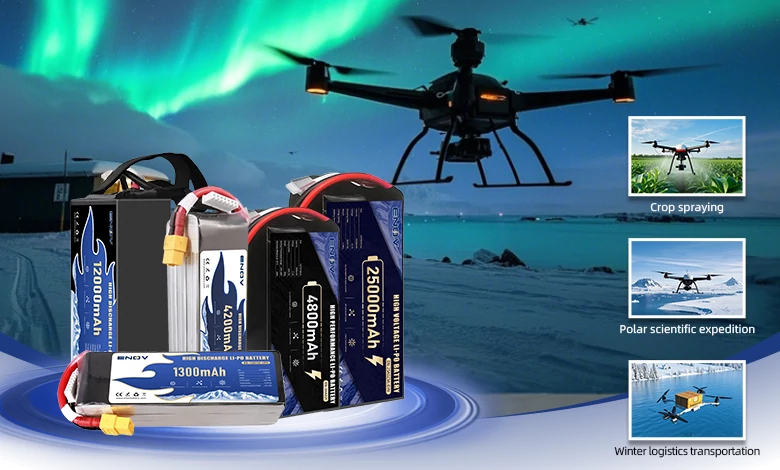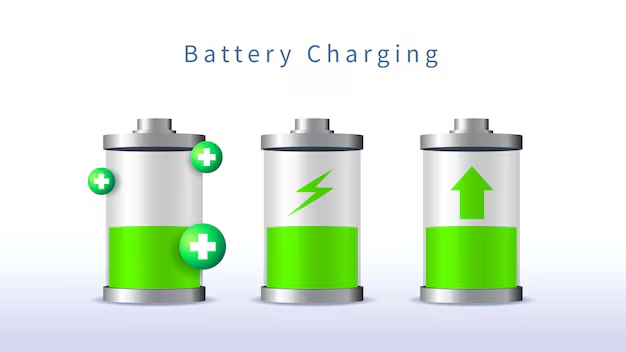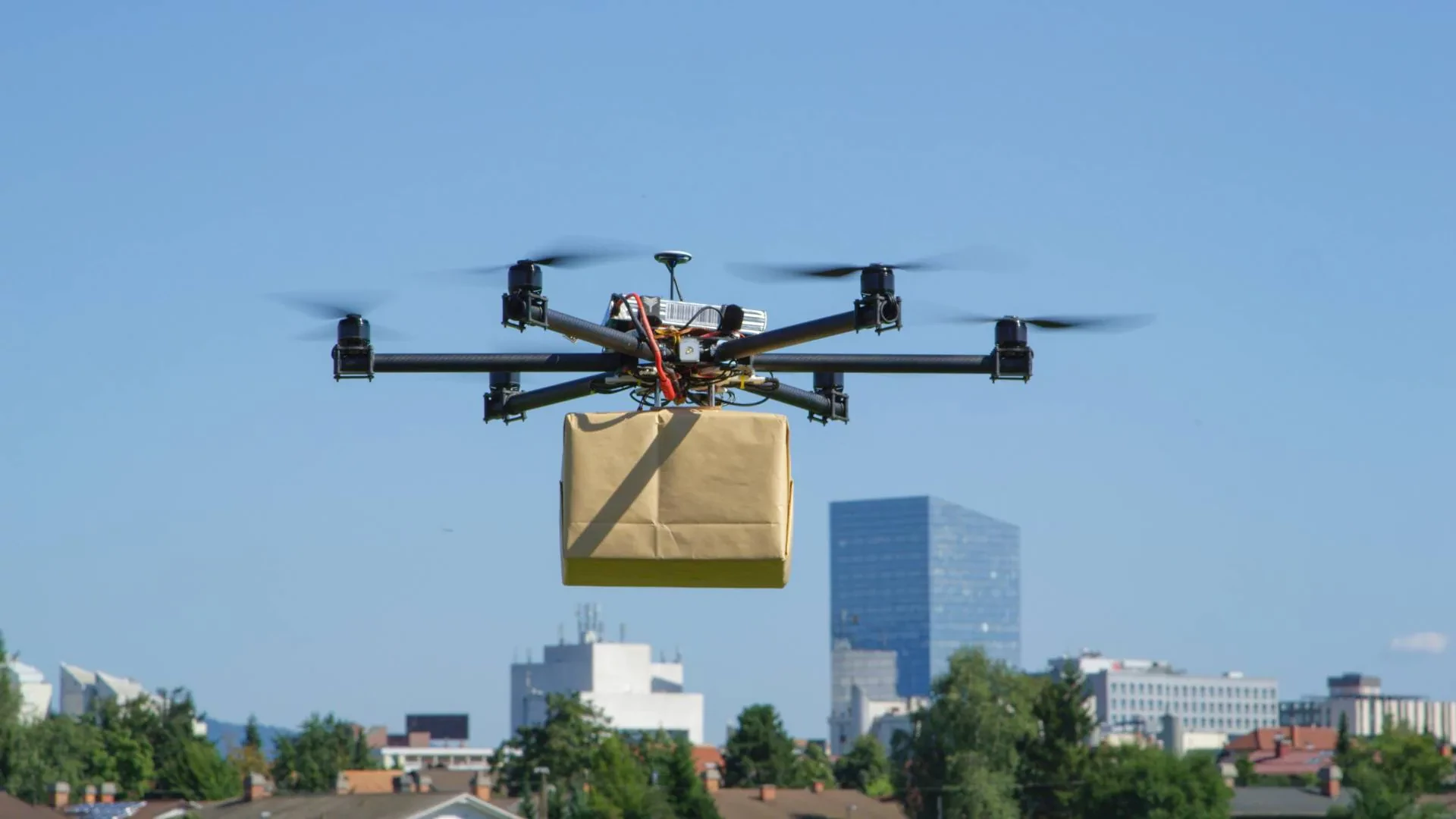Lithium Cobalt Oxide Polymer Battery

ENOV High-Energy drone batteries power industrial and commercial drones. Delivering 220–320 Wh/kg energy density, they enable long flight times (30+ mins) and support fast charging (2C). Perfect for aerial photography, surveillance, and delivery drones.
Lithium cobalt oxide polymer battery is a type of lithium-ion battery using lithium cobalt oxide as the cathode material and polymer as the electrolyte. With the core advantages of high energy density and flexible form factor, it has become the mainstream choice in the consumer electronics field, while also featuring distinct characteristics in terms of cost and safety. The following is a detailed explanation from dimensions such as core attributes, performance, application scenarios, and technical improvements.
1. Basic Structure and Working Principle
(1) Core Structure
The cathode adopts lithium cobalt oxide, a layered structural oxide and the first commercialized cathode material for lithium-ion batteries.
The anode is usually graphite, and some use silicon-carbon composites to provide a stable carrier for lithium-ion intercalation.
The electrolyte is made of polymer material, replacing the traditional liquid electrolyte. Combined with aluminum-plastic film packaging technology, the overall thickness can be controlled below 1 millimeter.
(2) Working Mechanism
During charging, lithium ions are extracted from the lithium cobalt oxide cathode and intercalated between the graphite layers of the anode to complete energy storage.
During discharging, lithium ions are extracted from the anode and return to the cathode, forming a stable charge cycle to achieve energy output.
2. Key Performance Parameters
(1) Energy Density
The mass energy density of a single cell can reach 200–250 Wh/kg, and the volumetric energy density is 650–730 Wh/L, making it the type with the highest energy density among current commercial cathode systems.
The energy density of mass-produced models is generally above 240 Wh/kg, about 20% higher than that of ternary lithium batteries, which can meet the high endurance requirements of small-sized devices.
(2) Voltage and Charge-Discharge Characteristics
The nominal voltage is 3.7V. The charging upper limit is 4.2V for ordinary models and 4.4V for high-voltage models. Some high-voltage improved versions can reach 4.45–4.55V.
The discharge rate is mainly 0.2–1 C, supporting a maximum discharge of 2–3 C. Some high-end models can achieve 3C fast charging (charging to 80% capacity in 30 minutes) or even 5C fast charging.
The voltage platform is stable, with small voltage fluctuations during charging and discharging, ensuring strong power supply stability.
(3) Cycle Life
Under normal temperature conditions, cycling at 0.5 C/1 C, the capacity can maintain about 80% after 300–500 cycles.
If the charging cut-off voltage is increased to 4.5V or above, the cycle life will be further shortened, and the overall performance is inferior to that of lithium iron phosphate batteries.
(4) Safety and Temperature Adaptability
The thermal stability is poor. The intrinsic thermal decomposition temperature of lithium cobalt oxide is only about 200℃. Oxygen evolution is likely to occur under overcharging or high-temperature environments, and the risk of thermal runaway is higher than that of lithium iron phosphate batteries and ternary lithium batteries.
The soft-pack packaging eliminates the metal shell, so external protection boards and strict edge-sealing processes are required to prevent gas expansion and internal short circuits.
Recommended operating temperature range: charging 0–45℃, discharging –20–60℃. Capacity attenuation will accelerate significantly when cycling above 50℃.
3. Core Advantages and Disadvantages
(1) Advantages
● Leading energy density: compact in size but capable of storing large amounts of energy, adapting to the compact design requirements of portable devices.
● Stable voltage platform: small voltage fluctuations during charging and discharging, ensuring stable operation of equipment.
● Flexible structure: the combination of polymer electrolyte and aluminum-plastic film packaging allows for ultra-thin and special-shaped products with high volume utilization.
Simple production process and good conductivity, suitable for high-current charging and discharging scenarios.
(2) Disadvantages
● High cost: cobalt resources are scarce and their prices fluctuate greatly, directly pushing up the overall cost of the battery.
● Limited cycle life: generally around 500 cycles, only half of that of lithium iron phosphate batteries.
● Prominent safety hazards: poor thermal stability, prone to thermal runaway when overcharged, used in high temperatures or under high current.
● Limited load capacity (specific power): not suitable for packaging large-capacity (above 1 Ah) or high-power equipment.
4. Typical Application Scenarios
It is mainly used in the consumer electronics field. About 65% of smartphones adopt this type of battery, and it is also widely used in devices such as TWS earphones, ultra-thin mobile phones, laptops, tablets, and digital cameras.
It is suitable for special equipment with high requirements for volume and capacity, including drone small packs, AR/VR glasses, portable monitors, and military night vision devices.
In power battery and large-capacity equipment scenarios, it has been basically replaced by ternary lithium batteries or lithium iron phosphate batteries due to cost, safety, and cycle life issues.
5. Usage Notes
Avoid overcharging and over-discharging. It is recommended to maintain the power between 20% and 90% to extend the cycle life.
Control the operating temperature. Ensure good heat dissipation when using in high-temperature environments, and avoid long-term operation above 50℃.
Use regular chargers to prevent internal dendrite growth caused by mismatched charging parameters, which may lead to short-circuit risks.
Quick inquiry
Drop us a line, and we’ll get back to you within 24 hours.

Ariana Yuan
Digital Operations Manager
Website Planning|Marketing Project Management for Drone Batteries|Scheduled Content Refresh|SEO Optimization

Ariana Yuan
Digital Operations Manager
Website Planning|Marketing Project Management for Drone Batteries|Scheduled Content Refresh|SEO Optimization




